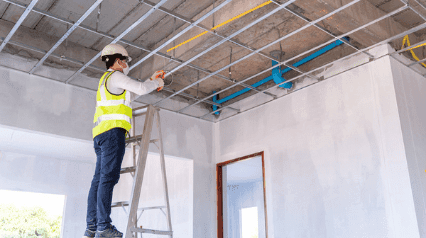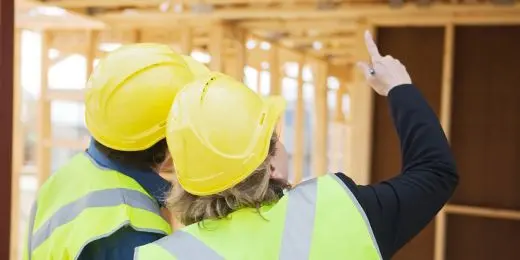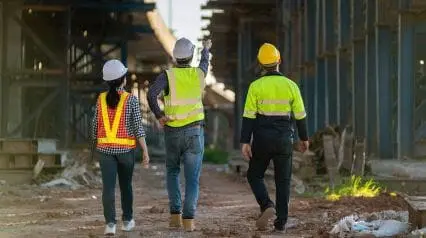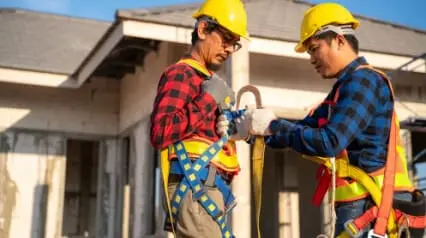What is Commercial Remodeling?
Commercial remodeling refers to the process of modifying the interior and exterior structure of existing commercial spaces such as offices, hotels, restaurants, and retail stores. It involves significant reconstructions, additions, alternations, and maintenance and repair works. Remodeling a commercial building helps strengthen its structural integrity and optimize its systems.
Commercial remodeling allows businesses to transform their space without having to construct another building. It often gets compared with renovation, but these two concepts differ from one another. While renovation mainly deals with small and subtle changes, remodeling consists of major alterations to the building’s exterior and interior.
For safety and legal compliance, various local regulations require building permits before proceeding with this process. Companies wanting to remodel their office spaces can visit their local authority’s official website for the requirements and other relevant information.
Benefits
Similar to remodeling homes, commercial remodeling presents an exciting opportunity to spruce up your business space. If you’re considering revamping your office floors or hotel facilities, here are five great reasons for making the change.
Maximizes Building Space
Remodeling is an excellent way to make the most of your commercial space. This procedure allows you to declutter cramped spaces and repurpose them as light, airy, and functional areas that suit your business needs.
A great example of this is swapping office cubicles for open floor plans. By removing physical barriers, your employees can easily communicate and collaborate, thereby maximizing productivity while fostering quality interactions.
Enhances a Space’s Look
Commercial remodeling also goes a long way to freshen up your space while boosting your brand. After all, it provides your area with a brand-new look to attract the right customers for your business.
Retail stores often adjust their floor plan to showcase their products effectively. The colors, lighting, sounds, displays, and overall layout all play a role in influencing a customer’s shopping behavior. For this reason, placing the right products in optimal areas inside the shop can facilitate a smoother shopping experience and indirectly drive sales.
Saves Time and Money
Remodeling is also a cost-effective means of changing your commercial space. This procedure requires less spending on financial and other resources compared to purchasing another property, making it fit for companies running on a tight budget.
Moreover, it eliminates the need for creating an entirely new design plan by basing itself on the original building structure. This setup shortens the time needed for reconstruction compared to building a new facility from scratch.
Improves Efficiency
Remodeling projects also help commercial buildings, especially outdated ones, return to or reach their optimal state. In utilizing energy-efficient designs, your building systems can operate at peak conditions while conserving energy. For example, eco-friendly heating and cooling systems significantly improve indoor air quality without spending too much energy.
These alterations allow you to follow green building codes and express your commitment to green initiatives, giving you a competitive advantage as an environmentally conscious establishment.
Promotes Building Safety
Lastly, remodeling is a foolproof way to enhance safety within your commercial property. Modifying or updating your space’s layout in line with regulatory safety standards helps avoid accidents and keep customers and employees safe from harm. Old buildings with outdated structures can use the help of remodeling to remain functional while abiding by safety codes.
Part of building safety includes regular inspections and permits. Be sure to check your local, state, and national standards for protocols on running building checks and securing a permit for commercial remodeling.
Stages of Commercial Remodeling
While the process differs from one structure to another, the commercial remodeling process often involves the following activities:
- Design and planning
- Bidding process
- Engineering and materials preparation
- Demolition
- Construction – structural repair and rebuilding process
- Clean-up and finishing touches
- Project closure
Create Your Own Commercial Remodeling Checklist
Eliminate manual tasks and streamline your operations.
Get started for FREE
Remodeling commercial spaces often vary depending on the type and complexity of changes the company wants to make for the building. Building occupancy is another crucial factor to consider, for it determines how long the remodeling process will last. General contractors will walk clients through these steps during their early phase.
What Qualifies as Commercial Remodeling?
Commercial remodeling often comes in various forms and styles. The final output will depend on the owner’s vision, budget, building regulations, and consultations with the commercial remodeling contractors and designers.
So, what does remodeling look like in commercial buildings? Listed below are some examples:
- Installing energy-efficient appliances and systems throughout the hotel premises
- Transforming traditional office cubicles into open working areas
- Merging two department rooms into a single collaborative space
- Modifying a restaurant’s dining space layout to reflect branding changes
- Repurposing empty storage spaces into staff or dressing rooms in a retail store
- Re-designing an industrial kitchen setup for more seamless kitchen operations
- Restructuring building designs to comply with the Americans with Disabilities Act Standards for Accessible Design (ADA)




